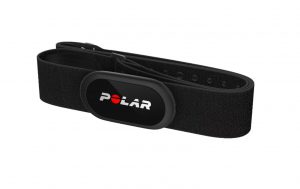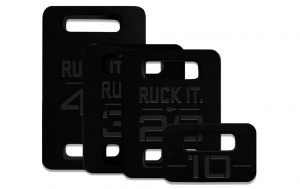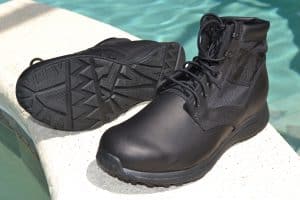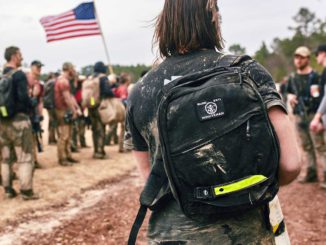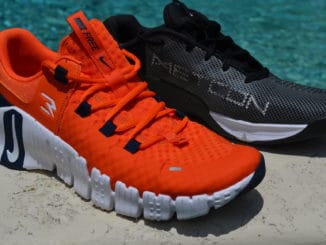How many calories does rucking burn?
That’s a great question – you certainly know you are working harder when you walk for long distances with a heavily loaded backpack (rucksack) on your back.
But, can we put some hard numbers to this?
Yes, we can. Here’s results from testing I’m doing – measuring calorie burn (via heart rate monitoring) at a variety of distances, loads, and paces.
Without further ado, here’s the results (Preliminary, more data will be added over the next 2-3 months):
| Ruck Weight | Pace (mph) | Calories burned/minute | Calories burned/hour | Calories burned/mile |
|---|---|---|---|---|
| 0 (no ruck) | 3.6 | 6.7 | 401 | 109 |
| 30 lb ruck plate + Rucker 3.0 | 3.0 | 6.2 | 373 | 123 |
| 30 lb ruck plate + Rucker 3.0 | 3.7 | 9.7 | 582 | 156 |
| 50 Lbs = 30 lb ruck plate + 20 lb ruck plate + Rucker 3.0 | 3.8 | 13.7 | 820 | 213 |
The two main variables are the weight carried, and the pace.
Really want to amp up the calorie burn? Carry lots of extra weight and go as fast as you can!
Secondly, more weight and/or faster pace helped me get out of Zone 1 and into Zone 2 of my heart rate.
A workout in Zone 2 will build more endurance as compared to a workout where your heart rate remains in Zone 1.

Here’s some of the gear I used during this test.
Rucking Calorie Burn – Overview
Recently, I’ve gone deep on rucking.
It’s fun, peaceful, and very low-impact.
With my new found passion I noticed that I was losing weight – even through the challenging pandemic lockdown.
That got me thinking – just how many calories am I burning when I go rucking?
To find out, I bought a Polar H10 Chest Strap Heart Rate Monitor (or HRM).
A chest strap HRM is the gold standard – it relies on the electrical signals from your heart beat.
Then I got to testing! And that meant a lot of rucking, which for me is a good thing.
Overall I found that carrying more weight or increasing the pace resulted in more calories burned.
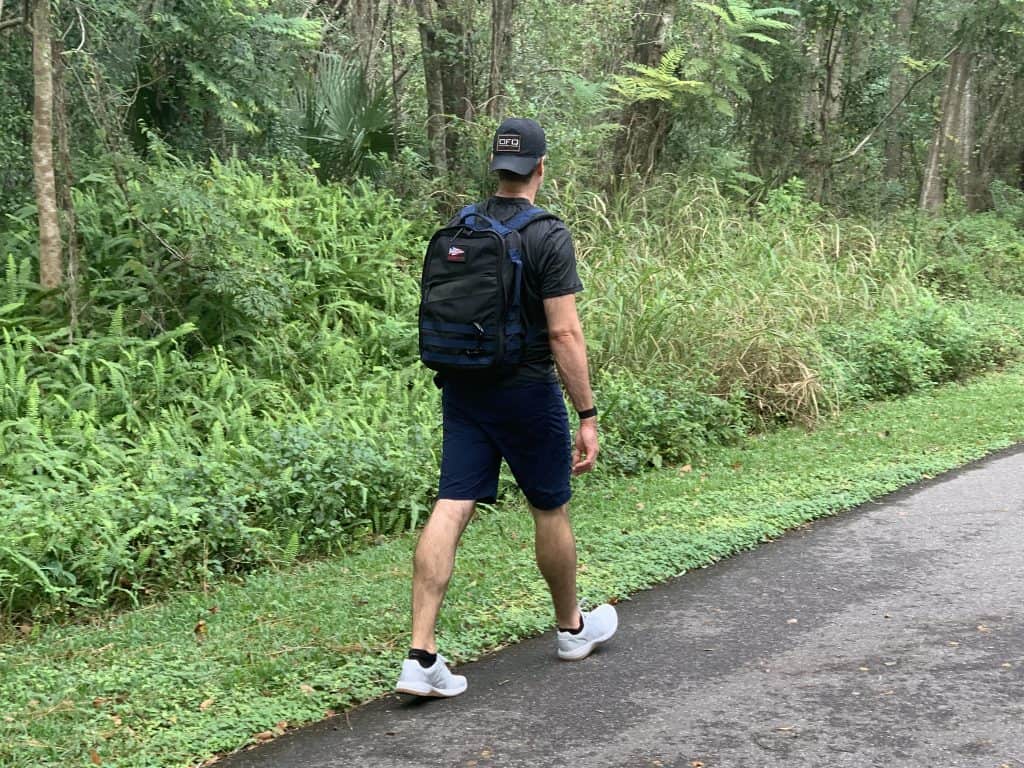
How to Burn More Calories While Rucking
I love rucking.
It’s a peaceful, low-impact way to get some exercise in.
The added weight on your back makes it feel so much more productive than just walking – and it’s true “functional fitness” – in my opinion.
My only beef – it takes quite a bit of time.
If you aren’t moving a lot weight, or moving quickly, it’s not really time efficient (for the workout intensity experienced.)
How can you burn more calories?
-
Carry more weight – as you can see from my results, more weight in the ruck will make you work harder – even when the pace is the same.
-
Increase the pace – moving faster will burn more calories as well. You will get to your destination quicker though – so you might have to ruck for time.
-
Ruck up an incline – Got hills or stairs? That’s a great way to increase the intensity. All this testing was done in Florida (aka flat land) so I didn’t get to test this much.
-
Lastly, do some PT (physical training) before you head out to ruck. Do some ruck get-ups, ruck overhead presses, ruck push-ups – or anything else that will get your heart rate elevated.
Of course you can combine all 4 methods as well. Good luck!

I will make one comment on adding weight. It’s going to be more wear and tear on your joints – your knees, hips, and verterbral discs.
For that reason, I’d recommend you focus on increasing your speed / pace, and only add weight once you can maintain a fast pace over some distance.
For comparison’s sake, the US Army standard for ruck marching is 4 mph (15 minute mile).
Rucking – Heart Rate Zones
For me, rucking usually puts me in Zone 1 or Zone 2 of my heart rate.
More weight and a faster pace tend to get me into Zone 2.
Here’s a typical example. This was 30 lbs/3.6 mph pace. I was in Zone 1 for the first half, but then hit a hill. After that I was in Zone 2 for the remainder of the ruck.
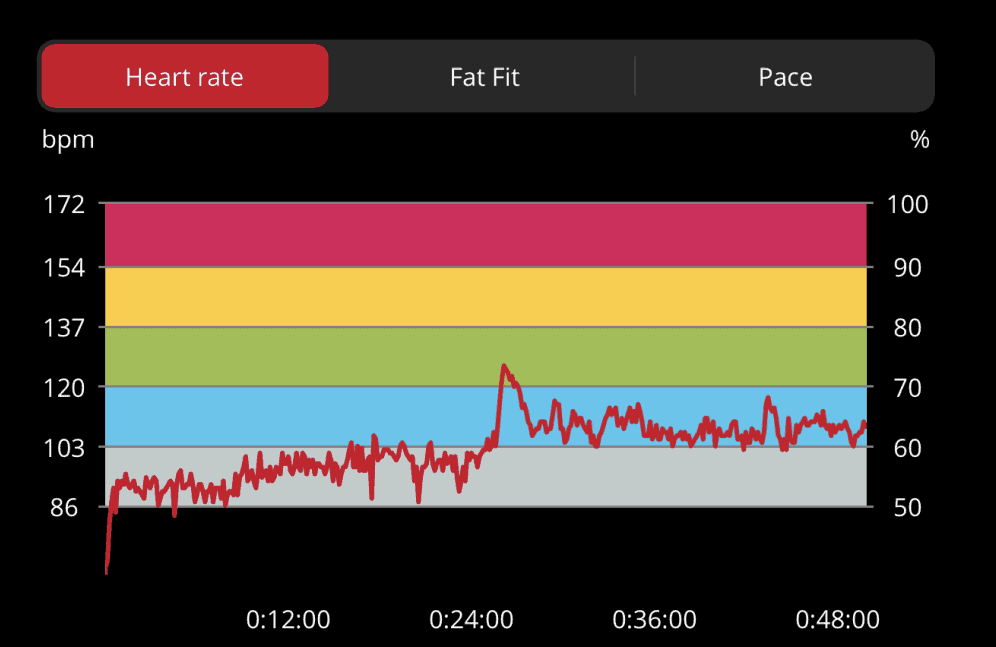
Now, check this one out. This was 50 lbs (a 30 lb plate, 20 lb plate, plus the Rucker, plus 2-3 pounds of misc.). I kept the pace high, and was up in Zone 3 and Zone 4 for nearly the entire workout.
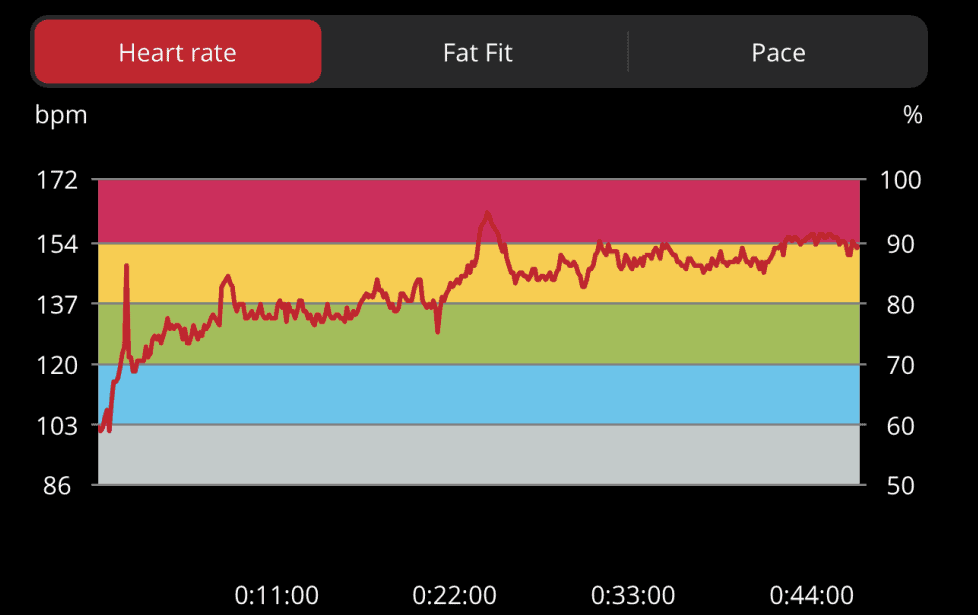
Rucking Calorie Burn – How Did I Test?
I did repeated test rucks for a distance of approximately 3.1 miles/5 kilometers.
I used the same path (same terrain) for all my testing.
The only variables were the load, the pace, and the weather conditions.
All testing was done in November and December 2020.
I rucked mostly on an asphalt walking trail or concrete sidewalk. This sort of “easy” terrain let me concentrate on keeping a consistent pace.
Rougher terrain causes variance in your pace – and probably makes you work harder too.
Calorie burn was tracked with the Polar Beat app, which works in conjunction with a Polar H10 chest strap heart rate monitor.
At the time of testing I was around 190 lbs body weight and probably 18% body fat (just to give you a rough idea.) The photos are representative of my actual testing.
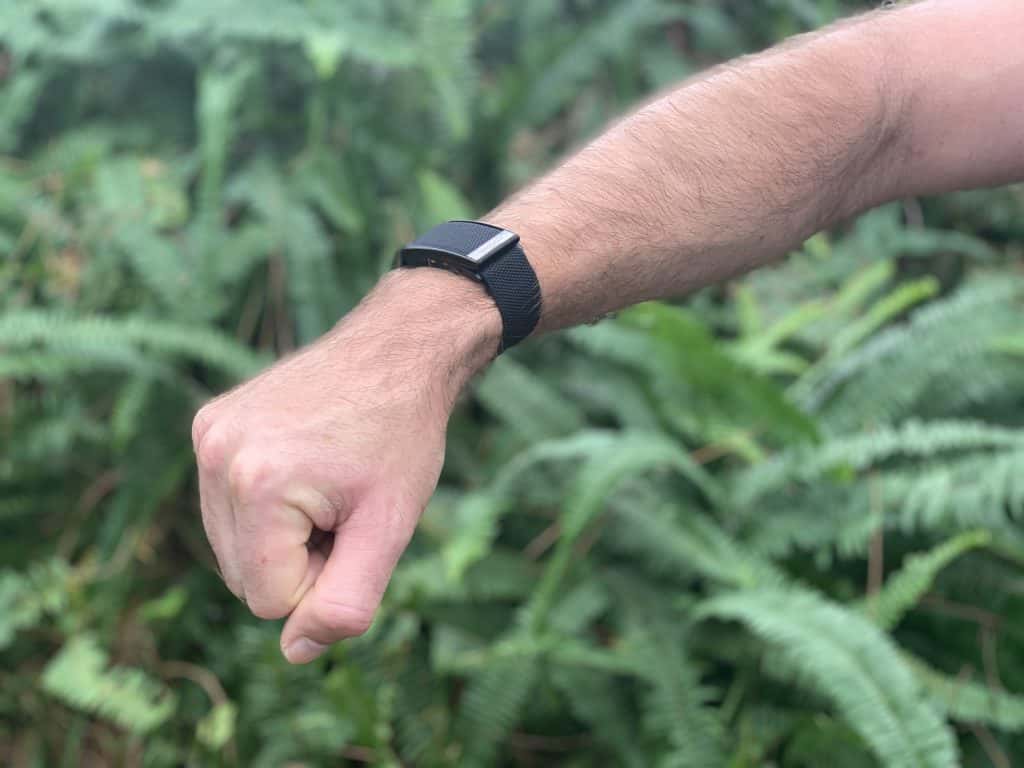
How Many Calories Does Rucking Burn?- In Summary
Calorie burn for rucking will vary depending on the individual.
But, we can make some general estimates provided we know the weight used and the pace.
For best results, buy a heart rate monitor and check for yourself.
References
Heart Rate Zones | The Basics (www.polar.com)
Photo Credits
Some product photos on this page are property of the vendor.
This website is not affiliated or associated with CrossFit, Inc. CrossFit is a registered trademark of CrossFit, Inc.
Affiliate Disclaimer
We are an affiliate of various sellers of the equipment used in this test. If you buy gear after clicking the links in this article, we receive a small commission at no extra cost to you. This helps us to bring you in-depth information and content on these great training tools.

Tim is the founder of FitAtMidlife.com – an avid gym rat for 30+ years, he’s a reviewer of many, many shoes – and founder of the Speed Bag Gathering – the world’s only gathering of speed bag punching enthusiasts. See more gym reviews at Tim’s YouTube channel.

